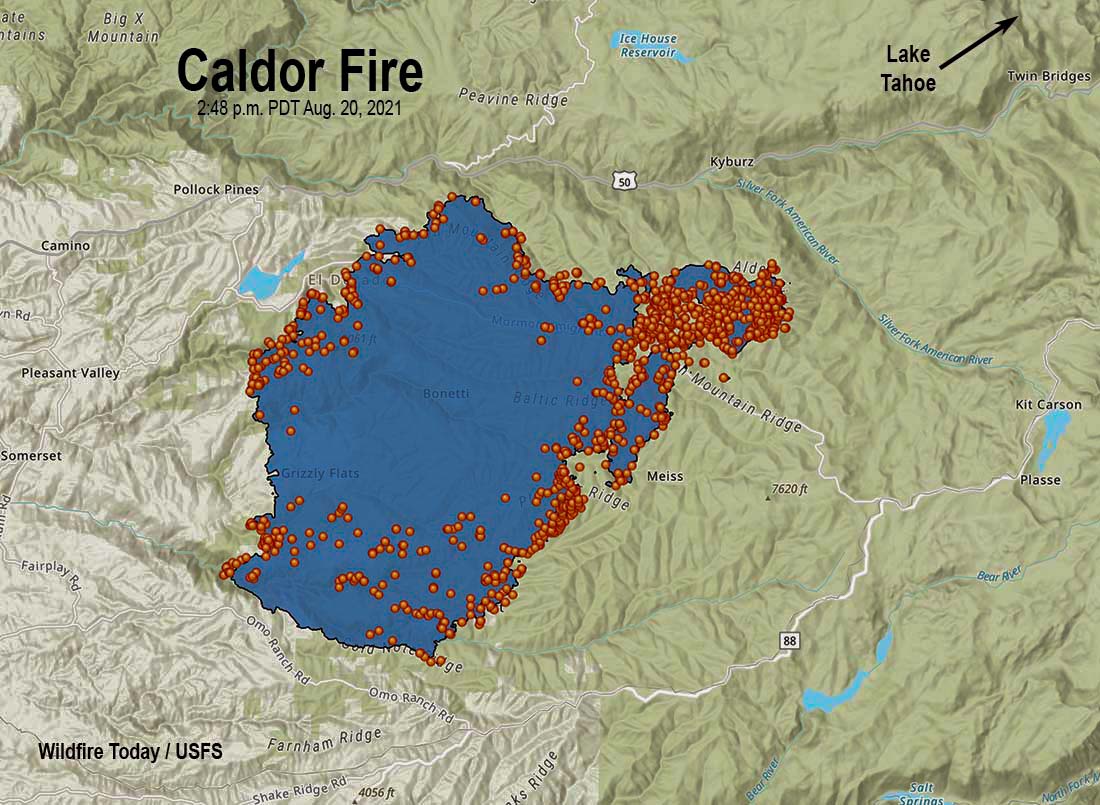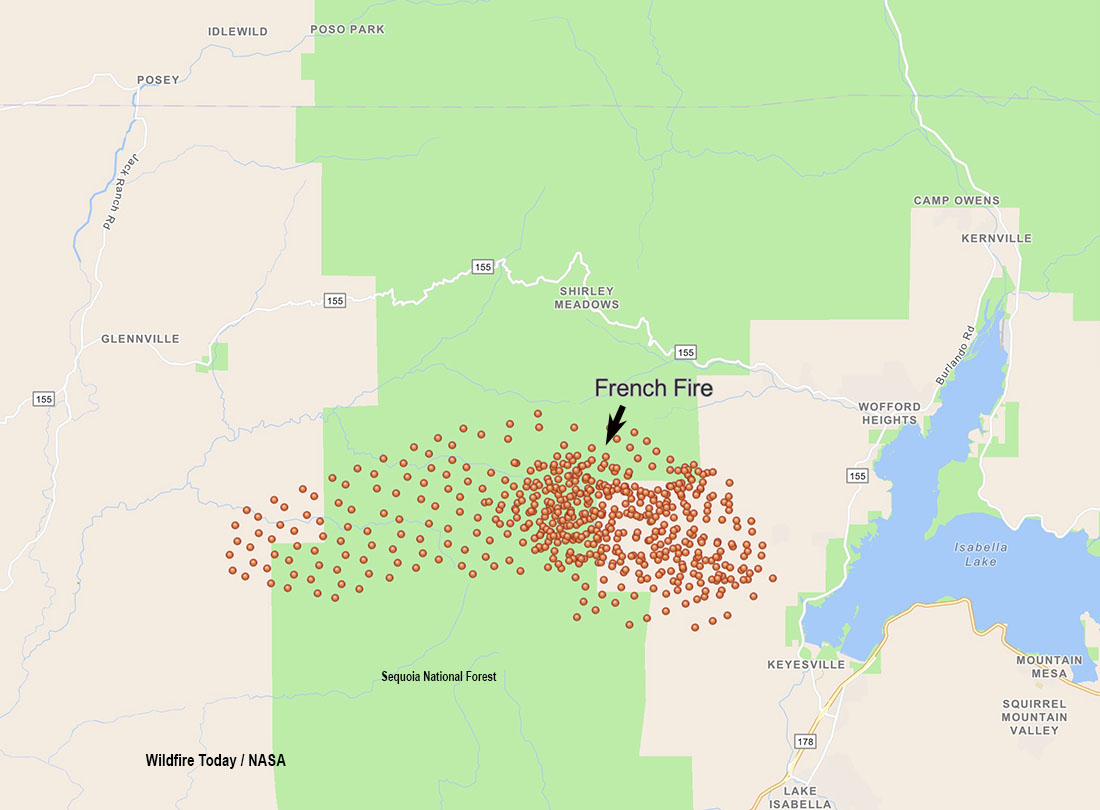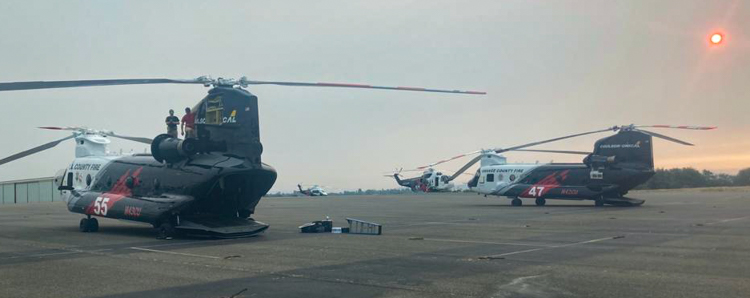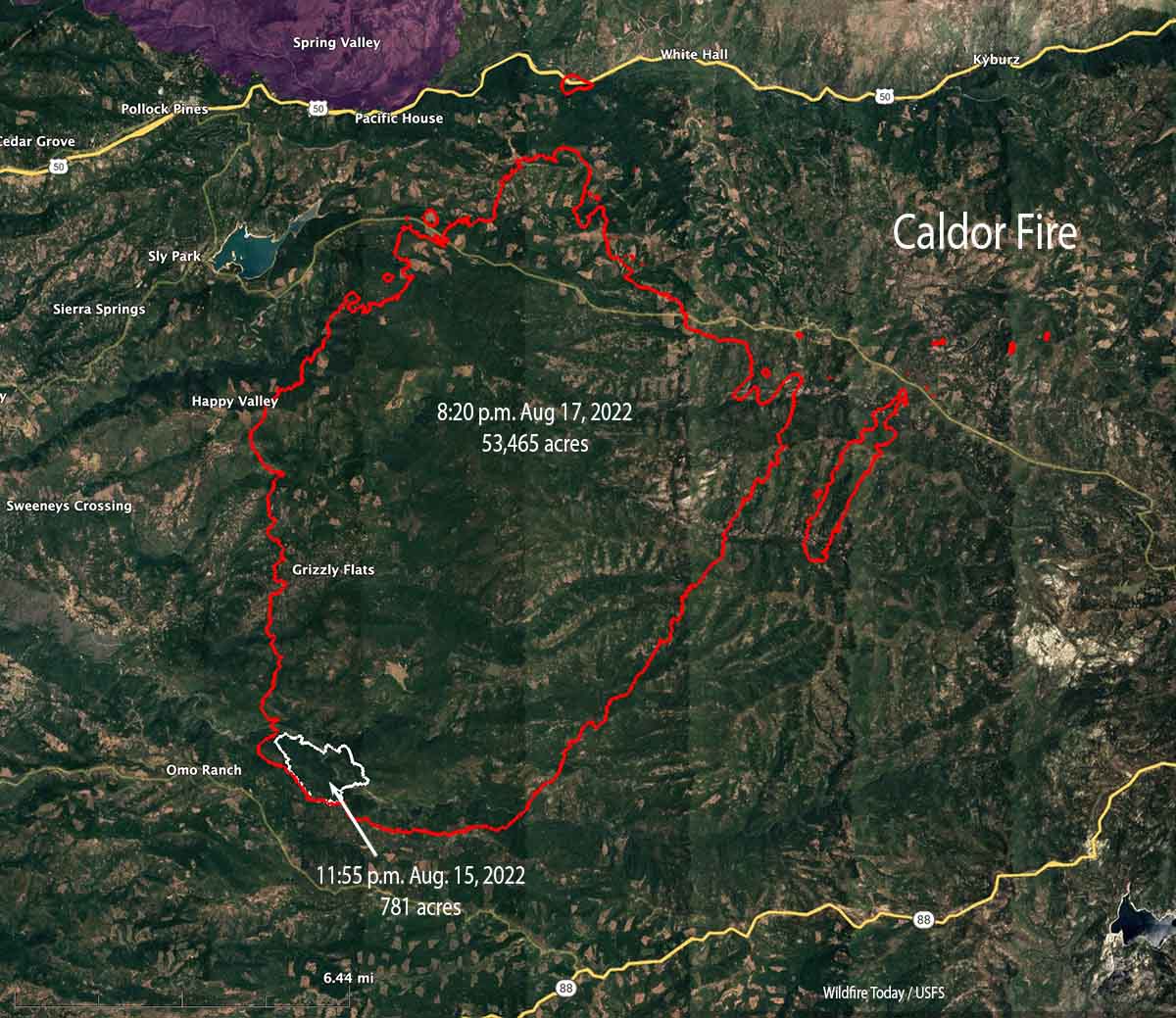8:28 a.m. PDT August 21, 2021

The 82,000-acre Caldor Fire southwest of Lake Tahoe is under a Red Flag Warning Saturday for conditions that could push the blaze northeast toward Highway 50.
The updated weather forecast for the fire area Saturday at 4,400 feet is for 14 mph southwest winds beginning at 11 a.m. gusting to 21 mph. The relative humidity will drop from the overnight high of 55 to 60 percent to the high 20s. There will be a 35 percent cloud cover with a high of 75 degrees.
To see all articles on Wildfire Today about the Caldor Fire, including the most recent, click HERE.
About two-thirds of the fire perimeter was active enough Friday night and early Saturday morning for satellites to detect intense heat.
Firefighters reported that winds decreased during the night and spot fires continued to become established in the dense timber stands and clear cuts due to the large amount of extremely dry dead and down material. The increase in relative humidity during the night allowed crews to conduct firing operations.
On the east side, satellites detected heat at 3:09 a.m. north of the Omo Ranch, and south, east, and northeast of Jenkinson Reservoir. The fire was also very active on the entire east side near Morrison, Iron Mountain, Iron Mountain Ridge, Voss, Meiss, and Caldor. At that time the fire was less than a mile south of Highway 50 at Riverton, and about two miles south of the highway near Kyburz. On the south side, satellite data overnight detected it was two miles north of Highway 88 at the closest point, Gold Note Ridge.
Crews have documented 179 residences that have been destroyed. Approximately 15,000 remain threatened.
Resources assigned to the fire Friday evening included 28 crews, 142 fire engines, and 20 helicopters for a total of 1,558 personnel.
8:27 p.m. PDT August 20, 2021

With strong winds in the forecast for Saturday officials have closed a portion of Highway 50 near the Caldor Fire which has burned over 75,000 acres 18 miles southwest of Lake Tahoe in California.
The closure began at 4:30 p.m. Friday. Highway 50 will be closed in both directions from the Sly Park Road exit to Twin Bridges. It will be open between Meyers and Twin Bridges for local residents only who reside between Meyers and Twin Bridges. These residents will be subject to providing identification and proof of residency. No traffic will be allowed west of Twin Bridges. (This information was acquired at 7 p.m. PDT Friday, Aug. 20, 2021, and could change.)
At 3 p.m. Friday the north edge of the Caldor Fire was about a half mile south of the highway. (See the map above.) A Red Flag Warning will be in effect Saturday from 11 a.m. through 8 p.m. The weather forecast for Saturday at 4,600 feet is for southwest and west-southwest winds beginning at 8 a.m. increasing in strength by 11 a.m. to 16 mph gusting to 25 mph, or 30 mph in some areas. The relative humidity will drop to 25 percent or lower. Skies will be clear with a high of 75 degrees.
Strong winds with no cloud cover and 25 percent humidity could push the fire to Highway 50 and possibly across the roadway. However a dense smoke layer could reduce solar preheating of the fuels and attenuate the spread somewhat. The Hot-Dry-Windy Index for Saturday predicts the area will be below the 50th percentile, which would not indicate extreme spread of a fire. This weather event will be a good test of the Index.
Many areas are under evacuation orders. InciWeb has the details.
On Friday the fire activity increased after noon when the wind began coming out of the south at 6 to 10 mph gusting to 23.
The fire spread is being driven by a heavy component of dead and down fuels and drought-stressed vegetation. Live fuels are cured to levels normally seen in late September, and the vegetation is extremely receptive to spotting. Fuel moistures are historically low.
Fire officials have documented the destruction of 118 residences.
Resources assigned to the fire include 18 crews, 109 fire engines, and 13 helicopters for a total of 1,118 personnel.




















